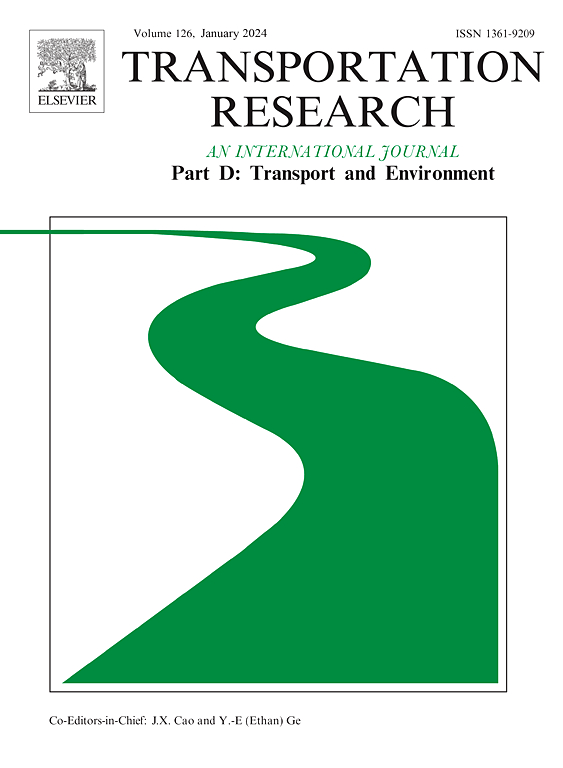绿色车轮在运动:电动汽车销售在脱碳的道路上
IF 7.3
1区 工程技术
Q1 ENVIRONMENTAL STUDIES
Transportation Research Part D-transport and Environment
Pub Date : 2025-03-25
DOI:10.1016/j.trd.2025.104704
引用次数: 0
摘要
交通运输部门是仅次于电力部门的第二大碳排放部门;通过电动和混合动力汽车实现脱碳目标至关重要。本文在环境库兹涅茨曲线和生态现代化理论的框架下,探讨了电动汽车销量、经济增长、人口、城市化和碳排放之间的关系。本研究采用固定效应矩分位数回归方法,分析了2010 - 2023年15个国家的数据。空间分析显示,电动汽车销量显著增长,同时能源消费趋势也发生了重大变化。实证结果表明,碳排放对低分位数的电动汽车销售产生不利影响。然而,随着这些国家的销售额上升,其影响在较高的分位数中减弱。同时,经济的扩张和可再生能源使用的增加推动了电动汽车的销售。这些结果突出了政策干预的必要性,以促进可再生能源、投资和公众意识,以加强这些国家的可持续交通。本文章由计算机程序翻译,如有差异,请以英文原文为准。
Green wheels in motion: Electric vehicle sales in the path to decarbonization
The transportation sector is the second-largest carbon emitter after the power sector; achieving decarbonization goals through electric and hybrid vehicles is crucial. This study explores the relationship between electric vehicle sales, economic growth, population, urbanization, and carbon emissions, framed within the Environmental Kuznets Curve and Ecological Modernization Theory. This study adopts the Method of Moments Quantile Regression techneque with fixed effects, analysing data from 15 nations between 2010 and 2023. The spatial analysis reveals notable growth in electric vehicle sales alongside substantial changes in energy consumption trends. Empirical findings indicate that carbon emissions adversely affect electric vehicle sales in the lower quantiles. However, its influence diminishes in upper quantiles as sales rise in these countries. Simultaneously, the expansion of the economy and the rise in renewable energy usage drive electric vehicle sales across all quantiles. These results highlight the need for policy intervention to promote renewable energy, investments, and public awareness to enhance sustainable transportation in these countries.
求助全文
通过发布文献求助,成功后即可免费获取论文全文。
去求助
来源期刊
CiteScore
14.40
自引率
9.20%
发文量
314
审稿时长
39 days
期刊介绍:
Transportation Research Part D: Transport and Environment focuses on original research exploring the environmental impacts of transportation, policy responses to these impacts, and their implications for transportation system design, planning, and management. The journal comprehensively covers the interaction between transportation and the environment, ranging from local effects on specific geographical areas to global implications such as natural resource depletion and atmospheric pollution.
We welcome research papers across all transportation modes, including maritime, air, and land transportation, assessing their environmental impacts broadly. Papers addressing both mobile aspects and transportation infrastructure are considered. The journal prioritizes empirical findings and policy responses of regulatory, planning, technical, or fiscal nature. Articles are policy-driven, accessible, and applicable to readers from diverse disciplines, emphasizing relevance and practicality. We encourage interdisciplinary submissions and welcome contributions from economically developing and advanced countries alike, reflecting our international orientation.

 求助内容:
求助内容: 应助结果提醒方式:
应助结果提醒方式:


